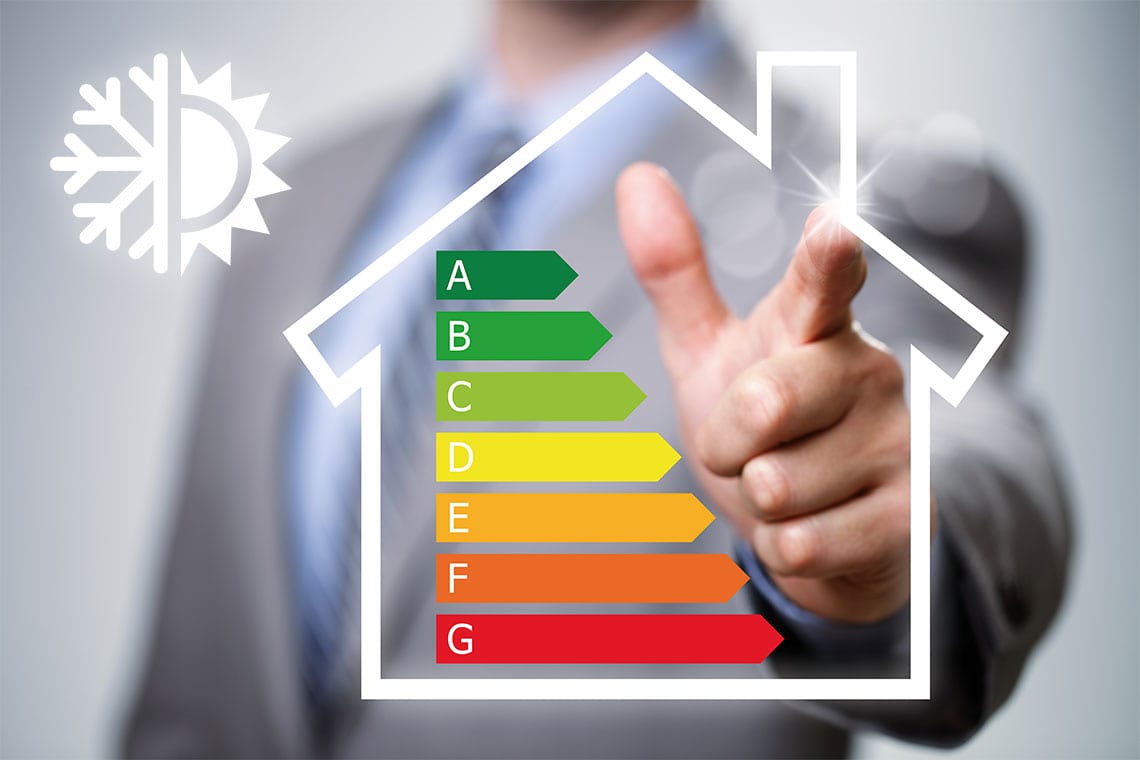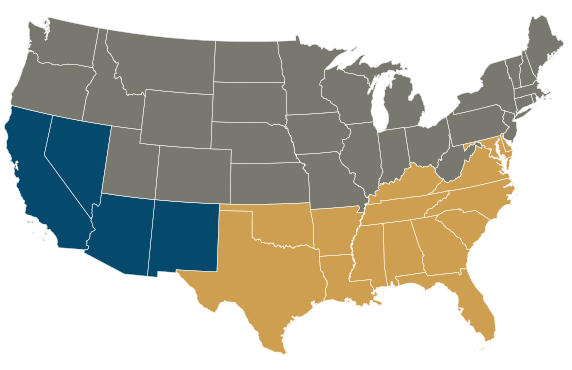Lower long-term energy costs mean lower cost of ownership
When selecting commercial heating and cooling equipment, efficiency is one of the most important points to consider. Using more energy-efficient equipment will not only help buildings stay within code and earn possible incentives for smart energy use—it will also reduce daily operating costs without sacrificing the quality and comfort of the work environment.
In heating and air conditioning, there are three main terms used to rate and compare energy use between pieces of equipment.
Heating Season Performance Factor (HSPF)
Typically used to measure the efficiency of heat pumps, HSPF is the ratio between heat energy supplied to a building during a typical heating season compared to the amount of electricity consumed. The higher the HSPF, the less electricity is needed to deliver a set amount of heat.

Seasonal Energy Efficiency Ratio (SEER)
Used to rate the energy efficiency of air conditioners, SEER is the ratio between the amount of cooling output a unit produces during a typical cooling season divided by the total amount of electricity it consumes while doing so. The higher the SEER, the more cooling is produced per watt hour of electricity, and the lower HVAC costs become during the summer. For example, our most efficient rooftop unit, the K-Series has SEER ratings up to 14.0.
Annual Fuel Utilization Efficiency (AFUE)
The efficiency of combustion-based heating equipment is measured in AFUE, which is a measure of the usable heat put off by a furnace compared to the amount of energy consumed in the process. The higher the AFUE, the less heat and fuel a furnace will waste during daily operation, and the less it will cost per season to use. Learn more about our most energy-efficient products.
What is your regional Energy-Efficiency Standard?
Federal minimum energy-efficiency standards for residential air conditioners, heat pumps and package units went into effect on January 1, 2015. For the first time, efficiency requirements for these products are based upon the state (region) where they are installed.

Requirements by Region
North
- Air Conditioners — 13 SEER
- Heat Pumps — 14 SEER/8.2 HSPF
- Package Air Conditioners/Gas Electric — 14 SEER/81% AFUE
- Package Heat Pumps/Dual Fuel — 14 SEER/8.0 HSPF/81% AFUE
SOUTHWEST
- Air Conditioners — 14 SEER/12.2 EER (45K BTU/h)
- Heat Pumps — 14 SEER/8.2 HSPF
- Package Air Conditioners/Gas Electric — 14 SEER/11.0 EER/81% AFUE
- Package Heat Pumps/Dual Fuel — 14 SEER/ 8.0 HSPF/81% AFUE
SOUTHEAST
- Air Conditioners — 14 SEER
- Heat Pumps — 14 SEER/8.2 HSPF
- Package Air Conditioners/Gas Electric — 14 SEER/ 81% AFUE
- Package Heat Pumps/Dual Fuel — 14 SEER/8.0 HSPF/81% AFUE
For cooling units manufactured on or after January 1, 2015, the U.S. Department of Energy has changed the minimum efficiency from 13 SEER to 14 SEER for equipment installed in the Southeast and Southwest regions. For the North, heat pumps must be a minimum of 14 SEER, but 13 SEER split air conditioners can still be legally installed.
A limited quantity of 13 SEER cooling units manufactured before January 1, 2015 can still be legally installed in all regions for at least the next 18 months.
If you have any questions about requirements and terms, or need help finding the product that’s best for you, contact your Armstrong Air dealer,
How You Can Benefit from Higher Standards
Switching to high-efficiency cooling equipment can help you save money on your monthly utility bills. The higher the efficiency rating, the more you can save. Efficient products can also increase the resale value of your home and may be eligible for local or state government and utility rebates.
